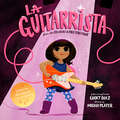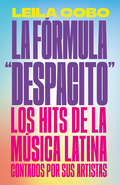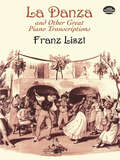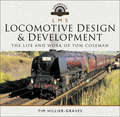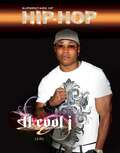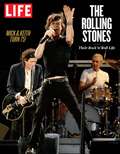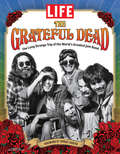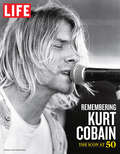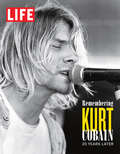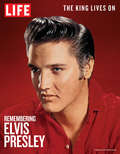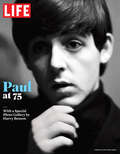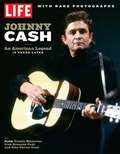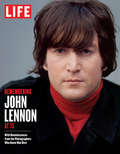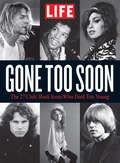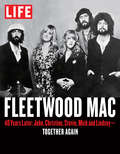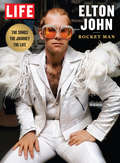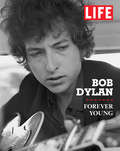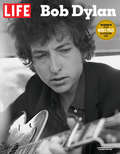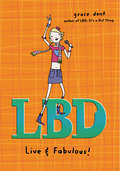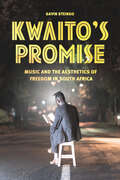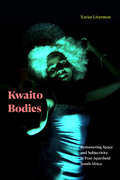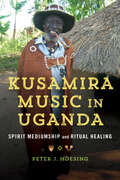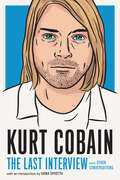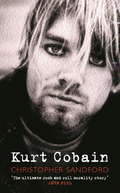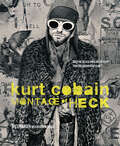- Table View
- List View
La Guitarrista
by Lucky DiazFrom the creators of Paletero Man—Latin Grammy–winning musician Lucky Diaz and celebrated artist Micah Player—comes a story about a tenacious girl who achieves her wildest dreams with a little help from her community and a broken guitar. <P><P> Strum! Strum! Strum! Get ready to rock with la guitarrista! <P><P> When Canta finds a guitar in the trash, she is one step closer to becoming a rock star. Even though the guitar is broken and she doesn’t know how to play, nothing can stop Canta from going after her dreams! <P><P> Perfect for fans of Because and We Will Rock Our Classmates, readers will rock out to this empowering tale of resilience, community, the power of music—and never giving up on your dreams. <P><P> The book includes Spanish words and phrases throughout, an author’s note from Lucky Diaz, and a link to the song inspired by the book. <P><P><i>Advisory: Bookshare has learned that this book offers only partial accessibility. We have kept it in the collection because it is useful for some of our members. Benetech is actively working on projects to improve accessibility issues such as these.</i>
La Fórmula "Despacito"
by Leila CoboEscrito por Leila Cobo, Vicepresidenta de Música Latina en Billboard y la mayor autoridad de la música latina, La fórmula Despacito es una mirada profunda al detrás de escenas de la música que haciendo bailar al mundo entero. Seguramente conoces Despacito, la canción de Luis Fonsi y Daddy Yankee con un remix de Justin Bieber, que rápidamente se convirtió en la canción más escuchada del mundo y cuyo video fue el primero en conseguir 6 millones de vistas en YouTube. Sin duda bailaste a I Like It, el relanzamiento de un hit de boogaloo de los setentas en la voz de Cardi B, Balvin y Bad Bunny. A donde quiera que vayas encontrarás los sonidos de la música latina, la cual se ha convertido en un fenómeno global, con 30 canciones entrando en la lista de las Hot 100 de Billboard en 2018. La fórmula Despacito contiene las historias desconocidas de la creación de los éxitos más grandes de la música latina de los últimos cincuenta años. Desde "Conga" hasta "Mi gente", esta historia oral es un verdadero tesoro de anécdotas exclusivas contadas por las mentes creativas de los artistas, los expertos agentes y los gurus de marketing detrás de cada cancion, dándole vida a las melodías que han definido cada década y se han convertido en sellos distintivos de cada generación.
La Danza and Other Great Piano Transcriptions (Dover Classical Piano Music)
by Franz LisztFranz Liszt (1811-1886) was not only a brilliant and innovative composer and the greatest piano virtuoso of the 19th century; he was also a generous popularizer of other composers' music. One of his primary methods was through his superb piano transcriptions of great orchestral, operatic, and other pieces. These transcriptions -- many of them masterpieces in their own right -- made it possible for people living far from the concert hall to re-create and enjoy music to which they would otherwise have had no access.Liszt's incomparable mastery of the art of transcription is reflected in this rich selection of favorites, including Rossini's "La Danza," Bach's "Organ Fantasy and Fugue in G minor," Beethoven's "Joyous gathering of the peasants" from the "Pastorale" Symphony, Mendelssohn's "Wedding March" and "Dance of the Elves" from A Midsummer Night's Dream, "The Trout" and "Erikönig" by Schubert, the "Polonaise" from Tchaikovsky's EugeneOnegin, and many others.
LMS Locomotive Design & Development: The Life and Work of Tom Coleman (Locomotive Portfolio Ser.)
by Tim Hillier-GravesIn 1958 one of Britain`s greatest locomotive designers died without public fanfare or recognition, mourned only by his family. Yet William Stanier, arguably one of our greatest engineers and his leader, said of him that without his Chief Draughtsman all he achieved with the LMS would not have been possible. How could such a man slip from our view and remain anonymous, although his Princess Coronations, Black 5s and 8Fs are regarded as three of the finest classes of locomotive ever built? And today many survive as stars to grace the ever growing preservation movement.In reality, Tom Coleman was an intensely private and modest man who never sought recognition or commendation. His need for privacy may be one reason why his life has remained shrouded in mystery for so long, but finally his story has been slowly pieced together from a wide variety of sources, many previously untapped. So now we can see for ourselves his great contribution to railway history and recognise his singular talents.
LL Cool J (Superstars of Hip-Hop)
by Z. B. HillSince 1985, LL Cool J has been a major part of hip-hop. In the 1980s and '90s, LL sold millions of albums and had many hit songs. Today, many fans might know LL more for his acting, but music was LL's first love. LL Cool J tells the story of how LL made his name in rap when he was still just a teenager. Read about how LL became one of hip-hop's first superstars. Learn about how LL moved to making movies without giving up the music career he loved.
LIFE The Rolling Stones: Their Rock 'n' Roll Life
by The Editors of LIFEIn 2018, when both Mick and Keith turn 75, celebrate one of the greatest Rock 'n' Roll bands of all time in the LIFE special collector's edition, The Rolling Stones.
LIFE The Grateful Dead
by The Editors of LIFEThe editors of LIFE Magazine present The Grateful Dead.
LIFE Remembering Kurt Cobain: The Icon at 50
by The Editors of LifeLIFE Magazine remembers Nirvana's Kurt Cobain.
LIFE Remembering Kurt Cobain: 20 Years Later
by The Editors of LifeLIFE Magazine remembers Nirvana's Kurt Cobain.
LIFE Remembering Elvis Presley: The King Lives On
by The Editors of LifeHe will always be the KingCelebrate the King of Rock 'n' Roll with this keepsake biography of Elvis Presley, lavishly illustrated with dozens of historic photos, including many from the archives of Life magazine. A detailed timeline traces Elvis's life from when he received his first guitar to his glory days filled with recording, acting and gyrating for shrieking fans, to his great '68 comeback comeback, and right up to his untimely death in 1977. Intimate photojournalism combines with insightful text to reveal Elvis behind the scenes . . . at Graceland and on the road, with Priscilla and Lisa Marie, in front of the cameras, and on the stage. Explore the days of "Heartbreak Hotel," "Don't Be Cruel," "Blue Suede Shoes," "Jailhouse Rock," "Love Me Tender," "Blue Christmas" and so many other unforgettable hits. It's now or never-so you should probably pick up your copy today.
LIFE Paul at 75
by The Editors of Life Tony SchermanLIFE celebrates the 75th birthday of renowned musician Sir Paul McCartney.
LIFE Johnny Cash: An American Legend, 15 Years Later
by The Editors of LIFEFifteen years later, celebrate the great American music legend Johnny Cash with LIFE's special edition. Enjoy rare photograhs as well as family memories from Rosanne Cash and John Carter Cash.
LIFE Gone Too Soon: The 27 Club - Rock Icons Who Died Too Soon
by The Editors of LifeThe story of the 27 club is a one of brilliance: precious, fragile, and amazing to behold. Six musical artists who all happened to die at the same early age-27-did more than perform memorable songs: They expressed ideas and emotions that were shared by enthralled followers from their generations and beyond. The stories of these luminous artist lead to tragic ends. But the lives they led were transformative-to music, to culture, and to countless lives.In Gone Too Soon: The 27 Club, LIFE pulls you into the brief and explosive lives of musicians Brian Jones, Jimi Hendrix, Janis Joplin, Jim Morrison, Kurt Cobain, and Amy Winehouse through photographs and interviews. Read how Hendrix uniquely mashed together blues and rock into a paisley-patterned kaleidoscope of sound, look at images of Cobain's infamous MTV Unplugged special and much more. The legacy of these artists still lives and breathes onstage, embodied by musicians who looked to these icons for inspiration.
LIFE Fleetwood Mac: 40 Years Later: John, Christine, Stevie, Mick and Lindsey - Together Again
by The Editors of LifeLIFE Magazine presents a tribute to Fleetwood Mac.
LIFE Bob Dylan: Forever Young
by Editors of LifeBobby Zimmerman pilgrimaged to New York City's Greenwich Village just over a half century ago, seeking to visit his muse Woody Guthrie in the hospital and to launch a music career. He did both, and his first, eponymous album was released precisely 50 years ago. The rest is legend: Dylan the folk hero, Dylan going electric, Dylan and the Band, Dylan and the American ethos. Today, he stands as an always-touring icon. A national institution. It's time to celebrate the remarkable life of Bobby Zimmerman of Hibbing, Minnesota. A life in pictures, including shots from those who know him intimately, and knew him in the reclusive years in Woodstock, like Eliot Landy and Bob Cato . LIFE's original coverage of Dylan, Joan Baez and the downtown scene of the early 1960s . Excerpts from Dylan interviews through the years that make the story come alive, and get to the heart of this enigmatic man.
LIFE Bob Dylan
by The Editors of LifeOn the occasion of Bob Dylan becoming the first songwriter to be awarded the Nobel Prize in literature, LIFE presents this updated classic edition of Dylan's illustrious and transformative life. With beautiful and rarely seen photographs and with a deeply engaging narrative the book takes readers from the icon's early days in Minnesota to his emergence onto the New York City folk-rock screen to his rise to the world's most influential singer and poet. There is only one Bob Dylan and through this chronicling of his relationships, his controversial public stances and those unforgettable songs, Dylan comes to life. PLUS: An exclusive appraisal of Dylan's place in the Nobel Prize pantheon.
LBD: Live and Fabulous!
by Grace DentAt long last, the LBD (Les Bambinos Dangereuses to the uninformed) have finished another awful term at Blackwell School. Finally, Ronnie, Claude, and Fleur are free! If only they had plans for the summer . . . and if only Ronnie's boyfriend Jimi Steele would get his act together. . . . Just as their bliss fades into the boring summer blues, rock god and the LBD's friend Spike Saunders sends them free tickets to the Astlebury Music Festival. Brilliant! Soon enough, the LBD are on their way for a weekend of henna tattoos, festival chic, awesome music, and about a million totally lush festival lads. In other words: the natural environment for the LBD! Packed with the same humor and joie de vivre that made LBD: It's a Girl Thing an international success, LBD: Live & Fabulous! is a sassy, classy romp sure to win the LBD a whole new legion of fans.
Kwaito's Promise: Music and the Aesthetics of Freedom in South Africa
by Gavin SteingoIn mid-1990s South Africa, apartheid ended, Nelson Mandela was elected president, and the country’s urban black youth developed kwaito—a form of electronic music (redolent of North American house) that came to represent the post-struggle generation. In this book, Gavin Steingo examines kwaito as it has developed alongside the democratization of South Africa over the past two decades. Tracking the fall of South African hope into the disenchantment that often characterizes the outlook of its youth today—who face high unemployment, extreme inequality, and widespread crime—Steingo looks to kwaito as a powerful tool that paradoxically engages South Africa’s crucial social and political problems by, in fact, seeming to ignore them. Politicians and cultural critics have long criticized kwaito for failing to provide any meaningful contribution to a society that desperately needs direction. As Steingo shows, however, these criticisms are built on problematic assumptions about the political function of music. Interacting with kwaito artists and fans, he shows that youth aren’t escaping their social condition through kwaito but rather using it to expand their sensory realities and generate new possibilities. Resisting the truism that “music is always political,” Steingo elucidates a music that thrives on its radically ambiguous relationship with politics, power, and the state.
Kwaito Bodies: Remastering Space and Subjectivity in Post-Apartheid South Africa
by Xavier LivermonIn Kwaito Bodies Xavier Livermon examines the cultural politics of the youthful black body in South Africa through the performance, representation, and consumption of kwaito, a style of electronic dance music that emerged following the end of apartheid. Drawing on fieldwork in Johannesburg's nightclubs and analyses of musical performances and recordings, Livermon applies a black queer and black feminist studies framework to kwaito. He shows how kwaito culture operates as an alternative politics that challenges the dominant constructions of gender and sexuality. Artists such as Lebo Mathosa and Mandoza rescripted notions of acceptable femininity and masculinity, while groups like Boom Shaka enunciated an Afrodiasporic politics. In these ways, kwaito culture recontextualizes practices and notions of freedom within the social constraints that the legacies of colonialism, apartheid, and economic inequality place on young South Africans. At the same time, kwaito speaks to the ways in which these legacies reverberate between cosmopolitan Johannesburg and the diaspora. In foregrounding this dynamic, Livermon demonstrates that kwaito culture operates as a site for understanding the triumphs, challenges, and politics of post-apartheid South Africa.
Kusamira Music in Uganda: Spirit Mediumship and Ritual Healing
by Peter J. HoesingA performance culture of illness and wellness In southern Uganda, ritual healing traditions called kusamira and nswezi rely on music to treat sickness and maintain well-being. Peter J. Hoesing blends ethnomusicological fieldwork with analysis to examine how kusamira and nswezi performance socializes dynamic processes of illness, wellness, and health. People participate in these traditions for reasons that range from preserving ideas to generating strategies that allow them to navigate changing circumstances. Indeed, the performance of kusamira and nswezi reproduces ideas that remain relevant for succeeding generations. Hoesing shows the potential of this social reproduction of well-being to shape development in a region where over 80 percent of the population relies on traditional healers for primary health care. Comprehensive and vivid with eyewitness detail, Kusamira Music in Uganda offers insight into important healing traditions and the overlaps between expressive culture and healing practices, the human and other-than-human, and Uganda's past and future.
Kurt Cobain: and Other Conversations (The Last Interview Series)
by Melville HouseKurt Cobain burst into American consciousness with a vengeance with the release of Nevermind, an instant classic that defined a sound and a generation. Three years later, he was dead of suicide, leaving a meteoric career and a cultural influence that would never wane.As the lead singer and guitarist of Nirvana, Kurt Cobain changed American music as few musicians ever have. His instantly identifiable raspy croon, his slash-and-burn guitar playing, and his corrosive and poetic lyrics made him a hero to a generation of lost souls. In interviews Cobain was funny, thoughtful, sarcastic, impassioned, and even kind. This collection of interviews provides a look at a man who was too often misunderstood.
Kurt Cobain: The Life And Death Of Kurt Cobain
by Christopher SandfordIn this compelling biography, Christopher Sandford explores the full, inside story of Kurt Cobain. From the disruptive childhood which had such a crucial impact on Cobain's personality to the ambitious career musician who, as a friend said, "lunged for success", and the worldwide breakthrough of Nirvana's Nevermind, Sandford also writes about Cobain's stormy marriage to Courtney Love, his heroin addiction, and how he became more and more of a recluse. Finally, he writes of the crisis when, in April 1994, Cobain turned a shotgun on himself and became a martyr for disaffected youth.The result is a saga of success and corruption which John Peel has called "the ultimate rock and roll morality story".
Kurt Cobain: Montage of Heck
by Richard Bienstock Brett MorgenThe companion book to the HBO film about the Nirvana singer and songwriter, “the most intimate rock doc ever” (Rolling Stone).Kurt Cobain, legendary lead singer, guitarist, and songwriter of Nirvana, “the flagship band of Generation X,” remains an object of reverence and fascination for music fans. For the first time, his story was told in the fully authorized feature documentary, Kurt Cobain: Montage of Heck, in 2015. Brett Morgen—the Oscar®-nominated filmmaker behind such acclaimed documentaries as the HBO presentation Crossfire Hurricane, which celebrated the fiftieth anniversary of the Rolling Stones, and The Kid Stays in the Picture—was writer, director, and producer of film. Visual artist Frances Bean Cobain, Cobain’s daughter, was executive producer. This riveting book accompanied Morgen’s documentary and delved further into the material created for the film, presenting an illuminating and honest portrait of the Nirvana frontman that captured the contradictions that made up his character. The book is composed of the extended versions of the exclusive interviews featured in the film. It also showcases the film’s incredible visuals with a mixture of animation stills, rare photography, and other treasures from Kurt Cobain’s personal archive. Director Brett Morgen offers his personal thoughts on the creation of the film and the need to shatter the mythos that surrounds Cobain. Taking fans into and beyond Morgen’s movie with unparalleled insight into the world of the late musician, this book is the perfect complement to a milestone documentary that forever changed the way fans view Kurt Cobain.“The film offers the bells and whistles but the book provides the real guts of the tale.” —Examiner
